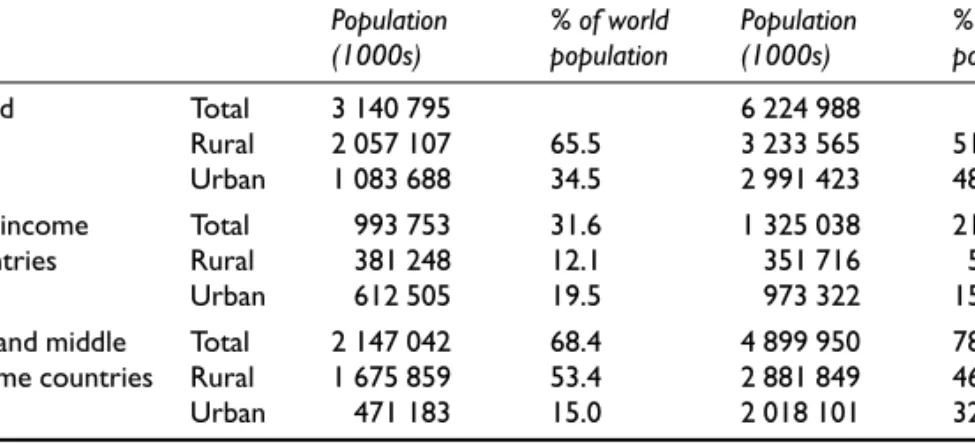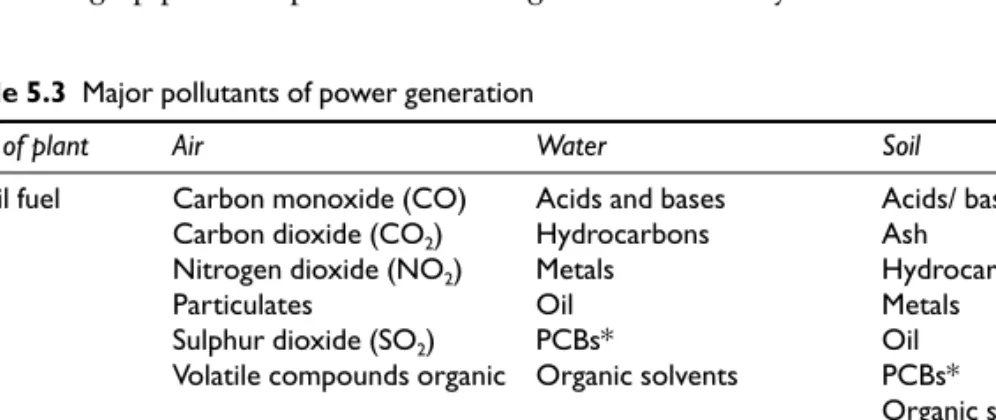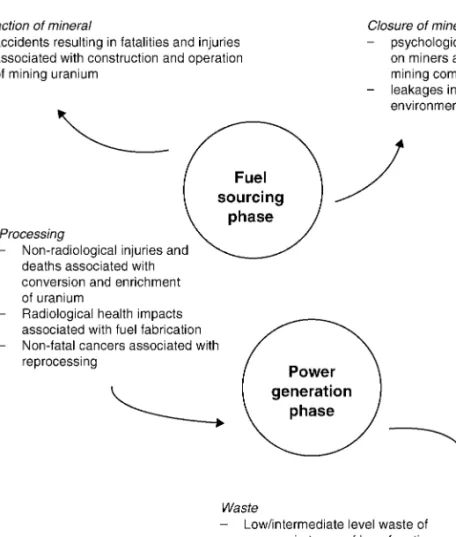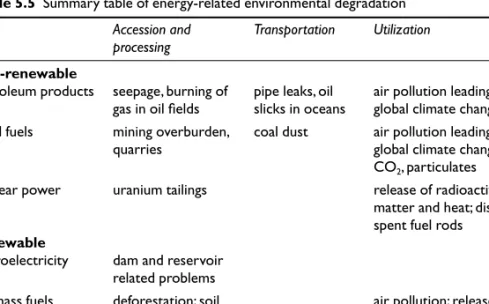142 McMichael AJ, Planetary Overload: Global Environmental Change and the Health of the Human Species, 1993, Cambridge University Press. 84 Reprinted with permission from Waste Incineration and Public Health © 2000 by the National Academy of Sciences, courtesy of the National Academies Press, Washington, D.C.
Overview of the book
Introduction
Why study environment, health and sustainable development?
Structure of the book
Health and the environment
Environmental quality
The following description of the three sections and the 14 chapters will give you an idea of what you will read.
Global issues
Acknowledgements
Introduction to health,
Overview
Learning objectives
Key terms
Health, environment and development
These factors are responsible for the illness and premature death of millions of people (often infants and children) in the developing world from causes such as malaria, intestinal parasites and diarrheal diseases. In addition, chemicals such as pesticides and cleaning agents, and physical hazards in the home, workplace, and natural environment are responsible for millions of other illnesses, injuries, and deaths.
Defining the key issues
This is despite the fact that biological agents in the environment, such as mosquitoes, parasites and water-borne bacterial pathogens, are implicated in the world's most important health problems. Tanzania and similar countries are also facing increasing health pressures similar to those described for the UK.
Health
Environmental health
Feedback
Global burden of environmentally related disease
The second biggest health burden is acute respiratory diseases; this is mostly related to poor indoor air quality and is discussed in more detail in Chapter 9.
Sustainable development
2 Can you think of the differences in health and disease patterns between low-, middle- and high-income countries? 2 How can the environmental features you identified affect the health of the community?

Summary
Some of the roads are very busy, bringing potential problems with air pollution and traffic accidents. Some of the housing is of poor quality - this can exacerbate the spread of any infectious diseases resulting from poor plumbing or lack thereof.
Further reading
Environment and the
Health risks and the environment – historical considerations
Understanding the relationship between health and the environment
The way a society views the relationship between disease and the environment will influence the way it is able to deal with health promotion initiatives. It is important for the practitioner to understand not only the theory and practice of environmental health, but also the cultural and social context in which it is to be used.
The environment and the development of public health policies
Moving to a new area can expose the migrant to new diseases or to different diseases, such as malaria. For example, if a community believes that dengue fever (an insect-borne disease) is caused by atmospheric conditions such as bad air, it will be difficult to convince them that removing stagnant water where insects can breed is an essential action to eradicate the disease.
The Industrial Revolution
In 1834 the Poor Law Amendment Act was passed in Britain; it established the Poor Law Commission – a group of individuals appointed by the government whose role was to inspect and promote the care of poor people. One of the focal points for the Poor Law Commissioners was sanitary conditions, as illustrated in the extract below published by the Poor Law Commission in 1842.
Report of an Inquiry into the Sanitary Conditions of the Labouring Population of Great Britain
Report of an Inquiry into the Sanitary Conditions of the Working Population of Great Britain. And that the removal of injurious physical circumstances, and the promotion of civic, domestic, and personal cleanliness, are necessary to the improvement of the moral condition of the population; for these healthy morals and refinements in manners and health do not long co-exist with filthy habits in any class of the community.
Public health in the late nineteenth century
They advocated the use of what is now known as the precautionary principle. This principle advocates the use of prudent social policy in the absence of empirical evidence, and has been advocated in more recent times by environmental campaigners in particular as the best way to deal with environmental issues such as stratospheric ozone depletion.
The rise of environmental awareness
In her bestseller Silent Spring (1962), Rachel Carson detailed some of the dangers that pesticides could pose to the environment and human health. The wreckage of the Torrey Canyon tanker, which spilled gallons of crude oil on the west coast of England in 1967, received widespread publicity.
Has environmentalism had its day?
In The Death of Environmentalism (2004), Shellenberger and Nordhaus argue that the focus of the environmental movement is too narrow and unable to stimulate national debate. One of the problems is that opinion in the United States is shifting to the political right, and environmentalists, who tend to be liberal, are unlikely to fully engage with a (neo)conservative audience.
International agreement on the environment
Pope (2004) counters this argument by arguing that environmentalism still works and can be as effective as it was in the past. The first recognition of a truly international environmental problem was the growing hole in the stratospheric ozone layer over Antarctica caused by the release of chlorofluorocarbons (CFCs) into the atmosphere; see Chapter 11 for more details on this.
Current environmental concerns
Millennium Development Goals
Reduce by half the number of people living on less than a dollar a day (refers to the US. 5 Improve maternal health Reduce maternal mortality by three-quarters 6 Fight HIV/AIDS, malaria.
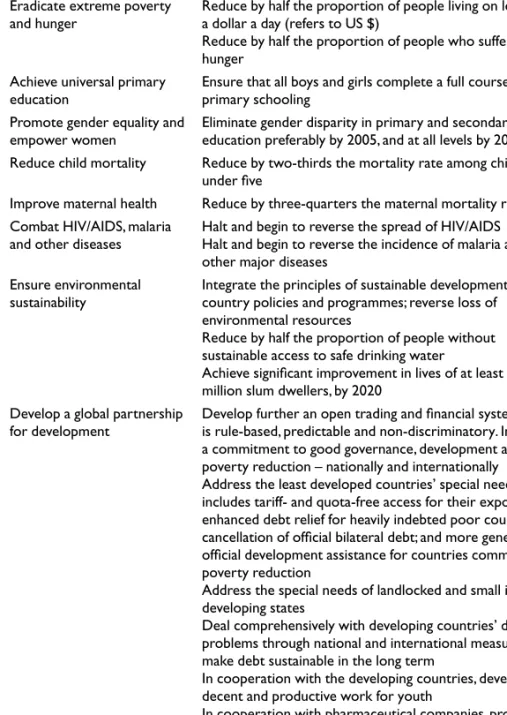
Basic requirements for a healthy environment
The principles of sustainable development balance the population's right to a healthy life with a consideration of the impact of economic growth on the environment. United Nations (1992) Report of the United Nations Conference on Environment and Development: http://www.un.org/esa/sustdev/documents/UNCED_Docs.htm.
Changing pressures on
Human activity and the environment
Looking at Figure 3.1, the first and obviously the most influential link in this chain is the “human driving force”. Are there other factors that you think have a significant impact on the health of the environment in your country?
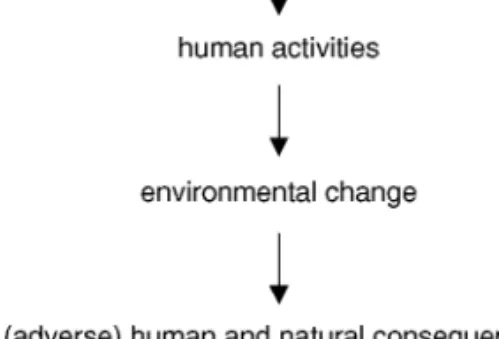
Population and urbanization
As can reasonably be expected, wealthier nations have a much greater impact on the environment than the new populations in the low- and middle-income world (Sarre and Blunden 1996). During any time of population increase, greater demands on the environment will occur through depletion of natural resources, combined with an increase in industrial development.
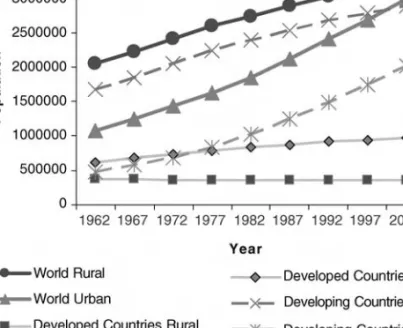
Poverty and inequalities in access to basic human needs
Studies in Bangladesh have shown that boys under the age of 5 received 16 percent more food than girls of the same age. Meanwhile, just 1.7 billion people (mainly in high-income countries) are responsible for most of the world's energy, meat and paper consumption, as well as driving.
Technological and scientific development
Most of the province's residents live in rural communities and remote access points have been established to serve these people. Technological developments will have a key role to play in achieving a balance between health and the environment and are essential if the goals of sustainable development are to be realised.
Economic development
Economic development traditionally begins at the level of subsistence agriculture and moves into agriculture, industrial development and the service sector. There are international agreements to facilitate free trade without barriers imposed by individual parties, but there is still the risk of trade in hazardous waste (from rich to poor countries) and the use of unregulated, cheap production processes that harm health. and the environment.
Understanding the pressures on health and the environment
For example, the trade in timber from tropical forests has been shown to be unsustainable and there are now moves to regulate this trade. Multilateral trade agreements and ongoing negotiations aim to ensure that free trade does not also lead to biodiversity loss, environmental degradation or the accumulation of dangerous goods.
Hazards and risks in the environment
There are many types of environmental health hazards; these may vary depending on the state of development of a country or region. Traditional hazards have been associated with lack of development, while modern hazards are associated with unsustainable development – in other words, development that lacks adequate mechanisms to protect human health or the environment.
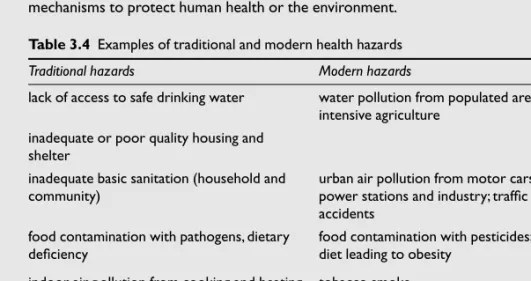
The risk transition
You will have seen the importance of human drivers - such as population, poverty, technology and economy - in alleviating or exacerbating the effect of the environment on health. Science and Environment Health Network (NGO, useful information on the precautionary principle): http://www.sehn.org/.
Environmental qualitySECTION 2
Environmental quality and human activity
Key term
Environmental quality and health
Environmental exposures and health
Human health is clearly associated with exposure to a variety of pollutants that must be taken into account when developing health policies. Diarrheal disease Other infections Malaria, other vector-borne diseases Injuries and poisonings Mental health conditions Cardiopulmonary diseases Cancer.
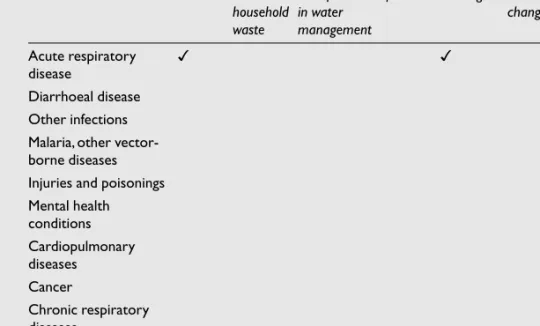
Industry
There are likely increases in industrial pollution as well as an escalation of resource depletion. How the environment will be affected will depend on emerging industries as well as changes in technology.
Industrial resources and emissions
With the industrial revolution in the UK and later in other parts of the developed world came air pollution. 3 Another important characteristic of the relationship between industry and health is the prevention of occupational accidents.

The impacts of rapid industrialization
Sustainable development and industry
The extract below by D'Souza (2001) discusses the integration of environmental management in small scale industries in India. 2 Three factors – the ecology, economic growth and social responsibility – must be part of the industry's value system, and included in business planning and design.
Transport
You may have noticed that this does not allow for the diversity of health-beneficial and health-detrimental factors associated with different forms of road transport. However, the bus can carry more people than other forms of road transport and cyclists are more at risk of accidents than bus passengers.
Transport and air pollution
Transport and accidents
Alternative additives have been found for petrol and in many parts of the world leaded fuel additives are now banned. Murray C and Lopez A (1997) Mortality by cause for the eight regions of the world: Global Burden of Disease Study.
Energy use and sustainable development
Energy – production and consumption
Positive and negative impacts of energy consumption on health
There are also huge costs and uncertain risks associated with the decommissioning of nuclear power plants and the safe disposal of radioactive waste. The negative effects of energy production and consumption are not only local, but also have regional and global climate change consequences that are important for achieving sustainable development.
Energy resources
However, there are concerns, especially over the building of large dams for the production of hydropower, about the environmental and social costs of these development projects. Nuclear power supplies only a relatively small number of people with electricity, and although it is energy-producing, overall it has resulted in only a minor environmental impact; it raises public concern because of the possibility of another accident like the one at Chernobyl in Ukraine in 1986.
Sustainable development and energy use
Development and energy production
Most energy consumption and production takes place in high-income countries, but as energy production changes due to the above factors, these numbers will increase and the role of low- and middle-income nations in energy consumption and production will begin to dominate.
Energy use and environmental degradation
Power generation
The Chinese government is very supportive of the project and sees it as a symbol of China's development and 'superior organization.' The Chinese are proud of the scale of the construction and the investment in new industries in the area. There were a number of direct health effects observed as a result of the ionizing radiation from the release of radionuclides as well as the result of stress and relocation.
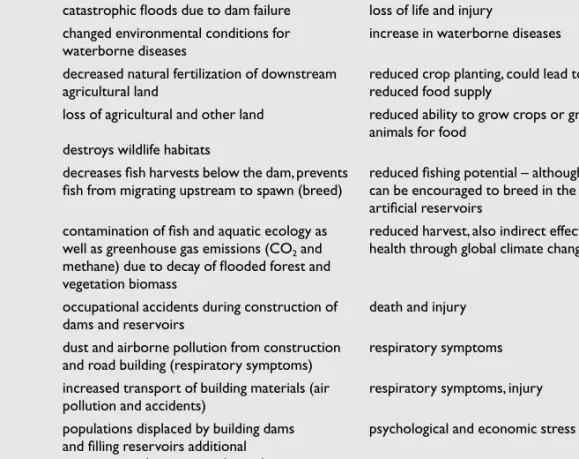
Energy and sustainable development
The nuclear fuel cycle has the potential for the greatest danger due to the long half-life of radionuclides and the dangers of an acute accident. According to WHO (1997), burning wood for cooking and heating causes direct health effects from accidents and indoor air pollution, leading to respiratory problems.
Renewable energy and sustainable development
Pittman, AC (1998) Power Generation and Distribution, in Stellman JM (ed) Environmental and Public Health Problems: Encyclopedia of Occupational Health and Safety.
Waste
Introduction to waste
What is waste?
Public concern about environmental problems
Some of the reported health effects included low birth weight, a high incidence of birth defects, seizures and learning problems (Brown and Clapp 2002). This chapter will provide an introduction to some of the problems surrounding waste and the different pathways to environmental and health problems.
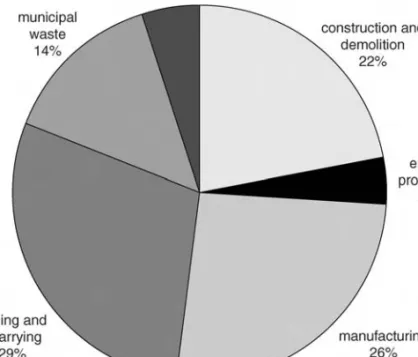
How much waste?
The site was found to cause air, soil and water pollution from leaking waste.
Waste management
The waste hierarchy
This requires information on: the nature of the waste; legislative issues; environmental impacts and the technical feasibility of the options. This can be described as a systematic and consultative decision-making procedure that emphasizes the protection and preservation of the environment across land, air and water.
Waste prevention/minimization
At the end of a product's life, as many of the component materials as possible should be recovered for reuse or recycling. Actions are being taken in various countries to promote recycling and reuse, particularly in relation to plastic packaging waste.
Improving final disposal and monitoring
The benefits of reuse are energy and raw material savings, reduced disposal needs and costs, and cost savings for businesses and consumers. For reuse to work, there must be interaction and communication between producers and consumers, and communication about consumer needs.
Hazardous waste
For example, the development of facilities to recycle greywater (wastewater from washing and domestic appliances) will significantly reduce the amount of fresh water used for activities such as toilet flushing or car washing. There are some other definitions used to describe hazardous waste, for example in the UK they are sometimes referred to as "special waste" or "heavy waste".
Solid waste management in different countries
Health effects of waste disposal
Problems are caused by the high moisture content of the waste and the high percentage of inert material. Composting can also generate dangerous substances, for example, some of the microorganisms that thrive in the composting process are able to release spores with allergenic properties that can stimulate or aggravate respiratory diseases.
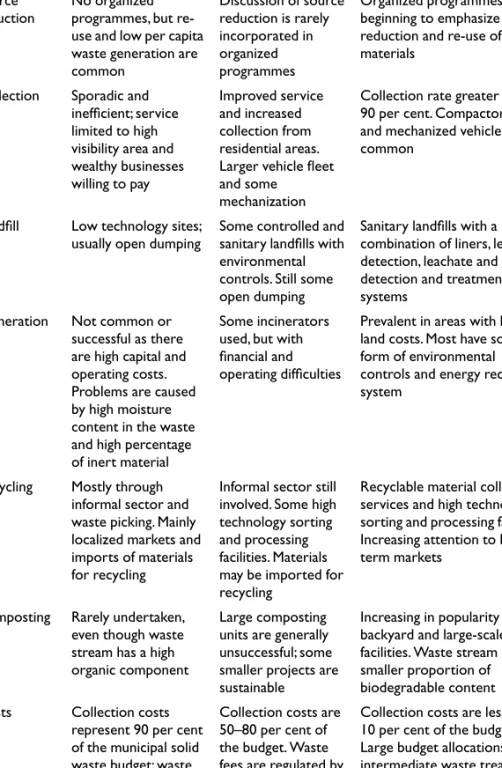
Landfill
The problem with all the studies is the lack of exposure data and the small numbers involved. There are biases and confounding factors in these studies that may explain some of the effects, but the evidence suggests that they may indicate some real risks associated with living near some types of landfills.

Incineration
High-temperature incineration also destroys many of the toxins and pathogens in medical and other hazardous waste. Bottom ash remains at the end of the process; this may contain toxic material and disposal methods are important.
Global issues of waste management Climate change
Transportation
Waste picking in low and middle income countries
The findings of the social survey were an important basis for the development of a sustainable solid waste management model. To be sustainable, a waste management scheme must include all aspects of waste, from production to disposal.
Water and sanitation
Access to water
You have read about the importance of access to an adequate amount of water for drinking, sanitation and hygiene. Monitor your family's water use for a day; note every time you turn on a faucet or use appliances that use water, such as flushing the toilet.
Time taken to access sufficient water
If you don't have a household water supply, consider how you get your water, who carries it and how the water is used. This simple activity shows how access to water can be taken for granted by those to whom it is readily available.
Water, health and disease
Water-borne disease; faecal-oral
If the water supply in the public domain is contaminated with cholera, an epidemic is likely. Helminth infections are more associated with sanitation than water supply, but transmission of infection can be reduced by promoting good hygiene when the water supply is adequate.

Water-washed disease
However, if the water supply is improved, it will not mean that the disease will be eradicated if the infection continues in the home, for example through open faeces.
Water-based disease
There are approximately 200 million people in the world infected with schistosomiasis, of which 20 million suffer serious consequences. The female migrates through the body and emerges in a painful blister, usually in the leg, to release eggs into the water from which they return to the cyclops.
Water-related vector-borne diseases
A number of environmental factors, including the source of water supply, waste disposal mechanisms and temperature, influence the spread of vector-borne diseases. There is another major environmental influence that is changing the array of vector-borne diseases: climate change.
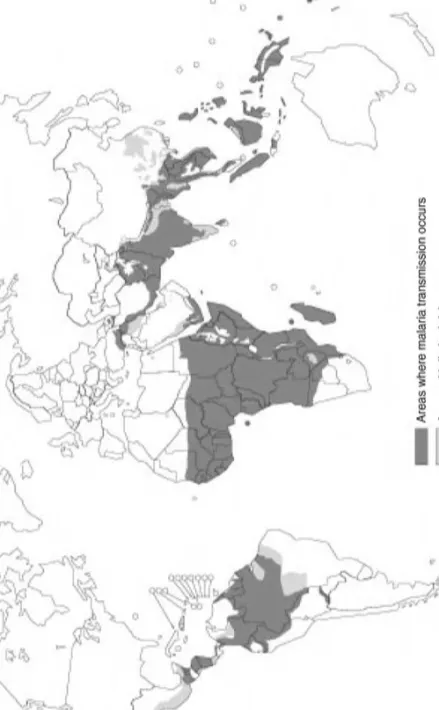
Sanitation
Pathogens associated with human feces can cause diarrhea, cholera, intestinal worm infections and typhoid fever. Epidemics are caused when pathogens such as Vibro cholorae that cause cholera are introduced into areas with poor sanitation and water supply and poor food security.
Water pollution (chemical contamination)
Water contaminants Nutrients and phosphates
Where there is runoff from fields into surface water supplies, or where water is treated with insecticides or molluscicides, pesticide levels may exceed established limits. The protection of water resources from pollution is important to ensure an adequate and reliable source of acceptable water resources.
Standard-setting for quality of the water supply
Pesticides in the water supply will also change the local ecology; this is particularly important in those developing countries that use fish caught from surface waters as an important source of protein in the diet. Some pesticides accumulate in the food chain and can lead to much higher levels of pesticide ingestion in humans than those obtained through drinking water.
Approaches to standard-setting
Underground stream
Large river
1 The first issue to consider is: What is the offer for the community now and what will it require in the future. The second issue to consider is: Are there any water-related diseases that are already causing a problem in the town and how can they be best prevented.
Outdoor air pollution
Outdoor air pollution and public health
Sources of air pollution
The main source of pollution in most urban areas is road traffic and other transport-related sources; the exception is sulfur dioxide that comes from power stations and other industries.
Types of air pollution
In the early part of the twentieth century, the main component of air pollution in British cities such as London was the emission of sulfur dioxide from the burning of coal and other fossil fuels; this led to acid smog. Ozone and hydrocarbons can damage plants and are involved in the production of photochemical smog.
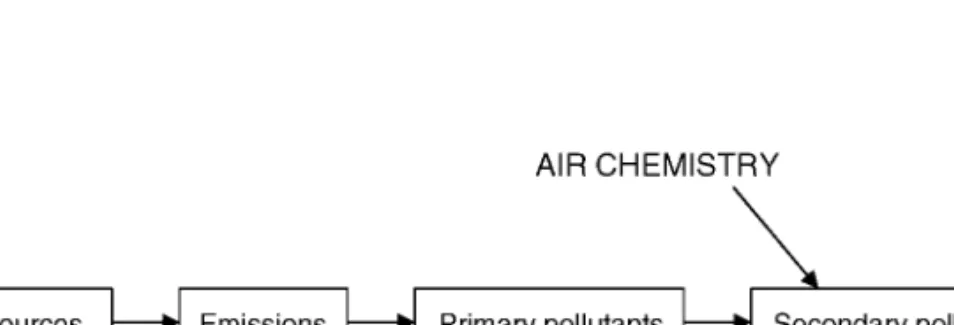
Studying the health effects of air pollutants
You should keep in mind that while most pollution is a result of industrialization, rural areas also have problems. There are means to reduce or inhibit most forms of outdoor air pollution, although there are usually economic consequences for controlling them.
Time-series studies of pollution and mortality links
Acute health effects
Long-term health effects
To study the long-term effects of air pollution, cohort or cross-sectional studies are conducted to compare the incidence and prevalence of disease in populations exposed to different annual mean levels of pollution. A recent study analyzed time series and cohort studies and found that time series analyzes may underestimate deaths due to air pollution and therefore the impact of air pollution on mortality can be better measured by cohort studies (Kunzli et al. 2001).
Does chronic exposure cause disease?
Air quality
Setting standards
The British example has shown that legislation can be effective in reducing levels of pollutants. However, effective legislation requires the development of reliable standards regarding the level of pollutants that can be tolerated without harming public health, and what constitutes 'clean air'.
Air quality, concepts and standards
Management of air quality in low and middle income countries
Estimating the burden of disease resulting from air pollution
Number of extra deaths per µg/m3 of black smoke = 0.208 × the actual concentration of black smoke = number of avoided deaths if the concentration had been 0. With this argument we can calculate the number of deaths that in one year if there was no exposure to black smoke:.
The indoor environment
The relationship between the indoor environment and health
Hazards of the indoor environment
Aspects of housing and health
Building design, building materials and construction-related problems
It has now been shown to be a toxic material that causes lung cancer and mesothelioma. Other building materials, such as urea foam insulation and MDF (medium density fiberboard), contain formaldehyde, which is linked to respiratory irritation.
Hazards of housing
Finally, the conditions in the indoor environment are also influenced by the location of the apartment (ie urban, industrial or rural) and the provision of comfort. A comparison of all risks provides a comprehensive picture of the quality of the housing stock.
Over-crowding
Cold housing and excess winter mortality
The magnitude of the winter surplus was greater in people living in homes that appear to be poorly heated. Private rental housing and owner-occupied housing have more deaths, many of the municipal and housing association houses are more modern.
Damp housing
The Government developed the Home Energy Efficiency Scheme to try to improve the housing stock and was primarily aimed at the elderly and those on low incomes. In addition, there is an observed dose-response relationship, with asthma severity increasing with increasing levels of moisture and mold in the home.
Principles of healthy housing
Humidity in the home can cause condensation which encourages the development of fungal spores. Both of these are known allergens, indicating a causal relationship with respiratory disease, particularly asthma, and exposure to moisture and mold (Peat et al. 1998).
Indoor air pollution in low and middle income countries
For example, the spread of infectious diseases can be reduced by ensuring a safe water supply, and the likelihood of poisoning can be reduced by attention to chemical safety.
Indoor air pollution by source
Biomass fuels
There is often no chimney to vent smoke, and because biomass fuels often burn inefficiently, there are high levels of particulates and pollutants compared to other fuel sources.
Indoor air pollution in India
What problems did the author highlight in using epidemiological studies to understand the burden of indoor air pollution in low- and middle-income countries. The national burden of disease in India due to indoor pollution was studied by combining exposures, risks and background rates.
Reducing indoor air pollution from biomass fuels
However, increasing evidence from different regions and countries strengthens the case for a link between indoor pollution and poor health. Any assessment of the burden of disease from biomass fuel should also consider the additional risks of the physical burden of harvesting or collecting biomass fuel.
The indoor environment in context
Smoke in the kitchen: health effects of indoor air pollution in low- and middle-income countries: http://www.undp.org/energy/event-smk0205.htm.
Global issuesSECTION 3
Global climate change and human health
What is climate change?
Climate change and climate variability
Scientists are able to model changes in climate using observations of past changes such as temperature, precipitation, snow and ice cover, sea level, circulation (ocean and wind currents), and extreme events. The report estimates changes in the global mean temperature of between 1.4° and 5.8°C by the year 2100.
The origin of greenhouse gases
These observations can then be used in combination with mathematical modeling to simulate what might happen in the future to natural vegetation, influencing forcings, global climate, regional climate and causing high-impact events. International policy makers aim to keep the increase in warming below a threshold of 2°C (global mean temperature); you will read more about the politics of climate change later in the chapter.
Global distribution of climate change
While the rise in temperature over the past 100 years cannot be conclusively attributed to human activity, the massive increases in potentially warming greenhouse gases certainly can, and even small increases in temperature can cause ecological damage.
Direct and indirect effects on human health
Communicable disease and climate change
Diarrhoeal disease
Increases in sea and air temperatures as well as El Niño events associated with epidemics. Meningococcal meningitis5 751 Airborne transmission worldwide* * * *Increase in temperature and decrease in humidity associated with epidemics.* * * Dengue/dengue hemorrhagic fever433Transmitted by bite of female Aedes mosquito.
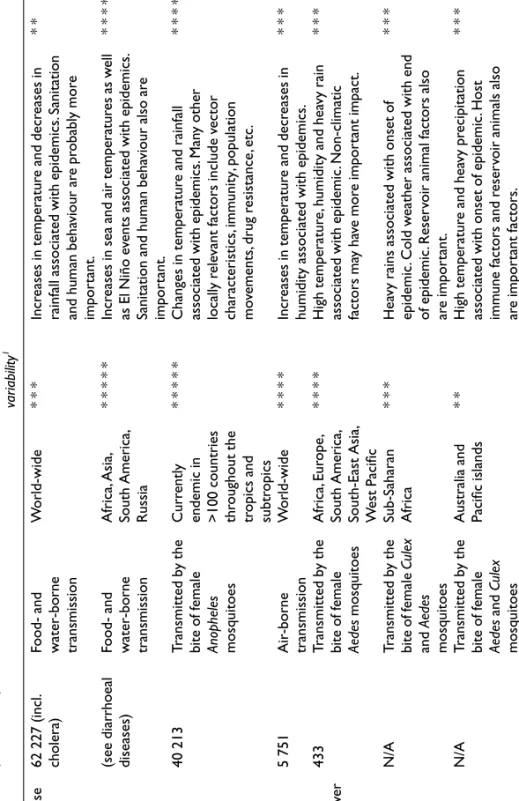
Malaria
High-income countries report an increase in reported food poisoning during the hot summer months. The distribution of the malaria vector can be modeled and its transmission potential assessed as a function of climate change.
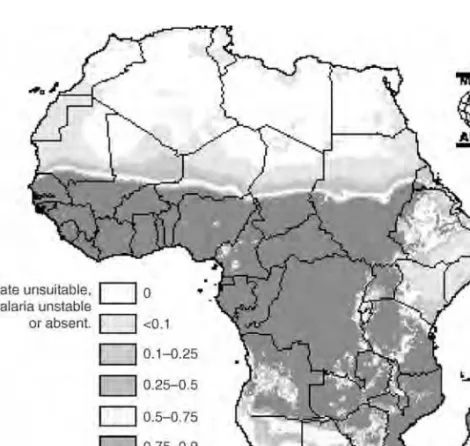
Physical changes in the environment
Heatwaves
Many of the excess deaths from heat or cold waves occur in people with pre-existing conditions. The devastating heat wave of 2003 provides an example of the consequences of poor planning for extreme weather events.

Uncertainties of climate change scenarios
For example, there is more confidence in the models of future increases in carbon dioxide concentrations and mean sea level than in modeled increases in storms or a higher incidence of summer droughts. The likelihood of a rapid and non-linear change in regional climate cannot be quantified using current data.
The politics of climate change
The IPCC's Third Assessment Report has now found that low- and middle-income countries are most at risk from climate change, even though emissions are still relatively low. Setting targets to reduce climate change means ensuring equity for low- and middle-income countries and ensuring sustainable development now and in the future.
Climate change and sustainable development
Equity
In this chapter you have explored one of the most important global health issues, namely climate change. Report of Working Group II to the Third Assessment Report of the Intergovernmental Panel on Climate Change.
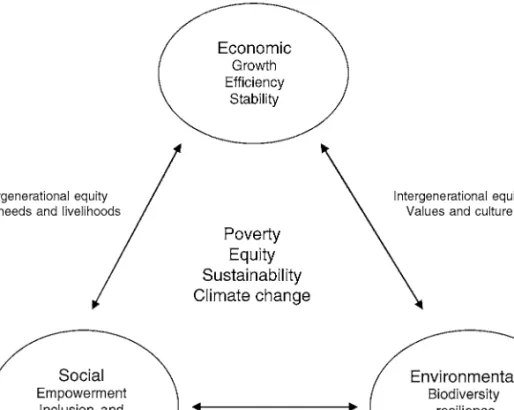
The balance of ecosystems and human health
Ozone depletion and ultraviolet radiation
The Montreal Protocol
The direct effects of ozone depletion on health
In light-skinned populations, exposure to UV radiation from the sun appears to be the most important environmental risk factor for basal and squamous cell carcinomas and cutaneous melanoma. Recent information now suggests that only squamous cell carcinoma risk is related to total exposure.
The indirect effects of ozone depletion
It is becoming increasingly clear that excessive UV exposure should be avoided to reduce the risk of developing such disorders. Phytoplankton, described as the 'grass of the sea', and zooplankton are also adversely affected by increased UV-B exposure as they are near the surface.
Acidic precipitation
Excessive UV-B exposure impairs photosynthesis and growth hormones; adverse effects accumulate over time, leading to a reduction in crop and forestry yields. Because UV-B exposure is selective in its effects, it can result in an altered plant profile, upsetting the Earth's ecological system.
Other environmental consequences of acidification
A possible decline in the zooplankton population will ultimately lead to a decline in the general fish stocks. The presence of ozone at the Earth's surface should not be confused with the effects mentioned earlier in this chapter on stratospheric ozone.
Biodiversity
Individual species can become extinct through hunting, chemical poisoning, loss of habitat, or the reduction of the species on which they depend for food. Whole ecosystems or large areas of larger ecosystems can be altered or lost by urbanization and agricultural clearing, with special habitats for individual species with limited distributions destroyed in the same ways.
Human health and biodiversity
Sometimes foreign species are introduced into a stable ecosystem, preying on and reducing the number of local species that give the ecosystem stability, and sometimes, in the most extreme cases, all these mechanisms occur at the same time. Whatever the cause, a reduction in biodiversity is known to lead to ecological destabilization and the ultimate impact on the environment and human health can be disastrous.
Malaria and quinine
Food and biodiversity
Genetic modification (GM)
Arguments in favor of genetic modification include the solution of some food production problems due to the production of greater crop yields. Proponents argue that genetic modification of crops can therefore help alleviate food shortages in low-income countries.
Deforestation
In some cases, this involves the loss of the forest which can make the project unprofitable. In 1985 the Tropical Forest Action Plan (TFAP) was formulated and was designed to involve local communities and national governments in the management of forests.
Action on biodiversity
For example, maintaining forests as part of intercropping with food crops or as a hedge on agricultural land has been successful in some parts of the world. Farman J (2001) Halocarbons, the ozone layer and the preliminary principle, in Harremoes P, Gee D, McGarvin M et al. eds) Late Lessons from Early Warnings: The Precautionary Principle 1896–2000.
Disasters
Responding to disaster
Natural disasters
Extreme weather and global climate change
Indonesia was the hardest hit in terms of loss of life and physical damage, but appears to have escaped the worst economic disruption from the tsunami. Hurricane Karl was about 1,400 miles west-southwest of the Azores and unlikely to threaten land.
Floods
As water levels rise, families must stay in schools and other buildings without adequate food and clean water.
Man-made disasters
Even after this incident, there are still weak regulations in many countries controlling the location of potentially high-risk industries and insufficient emergency planning for the possibility of chemical disasters. Note the catastrophic effects of dam bursts and collapses, not only in terms of lives lost, but also in numbers affected.
Psychological effects of disasters
The plan included: assessing mental health needs and mapping mental health activities in Aceh; providing guidance for action and training of community leaders, as well as strengthening the mental health system, including the Aceh Psychiatric Hospital.
Emergency response and planning for disasters
For example, susceptible communities may be advised to evacuate their homes if they live in the path of a flood or fire. The effects of the Southeast Asian tsunami could have been reduced if an early warning system like the one in the Pacific region had been in place.
Mitigation of disaster – natural events
Divide your plan into pre-event, warning or alerting, response and rehabilitation phases. ensure that construction practices comply with standards; plan safe havens to escape the hurricane. provide public education for hurricane mitigation. practice an evacuation plan with emergency services. Check, for example, whether there are enough roads to allow communities to evacuate; safe evacuation areas; and effective methods of communication through the media. ensure that sufficient hospital and emergency treatment centers are available.
Mitigation of disaster – man-made events
Health consequences of war
Indirect environmental effects of war – refugees
A monitoring and reporting system should be established to assess the effectiveness of the measures and ensure timely detection of newly developed risks. The site should be selected in accordance with the facilities necessary to provide hygienic and healthy conditions.
Direct environmental effects of war
In the few cases in which it has been tried, there have been limited outbreaks of disease involving local residents and wildlife. There was also much destruction at the site of the bombs and in the surrounding areas of both cities.
The urban environment and health
The urban environment
Defining the urban environment
Modifying the natural environment for urbanization
